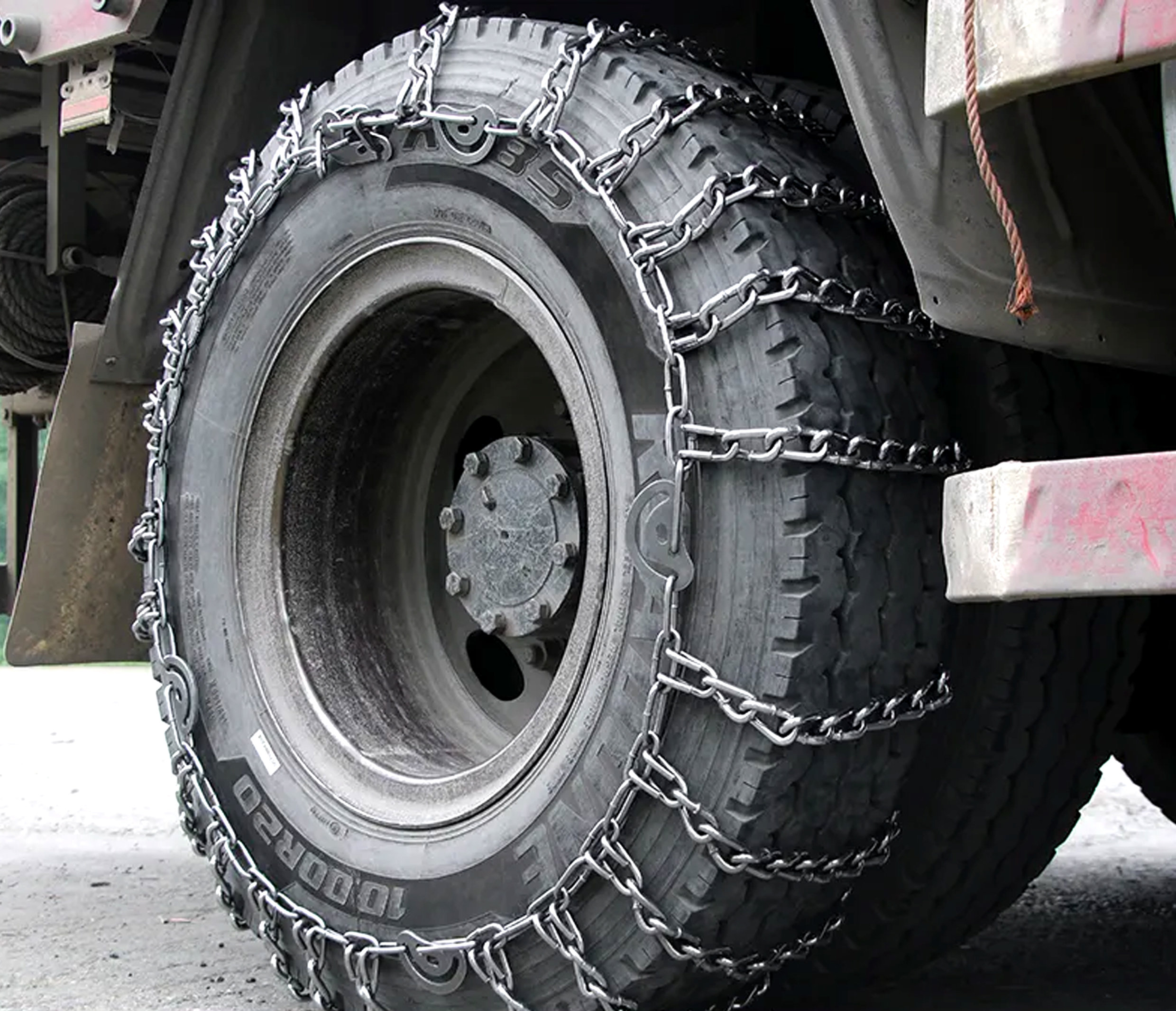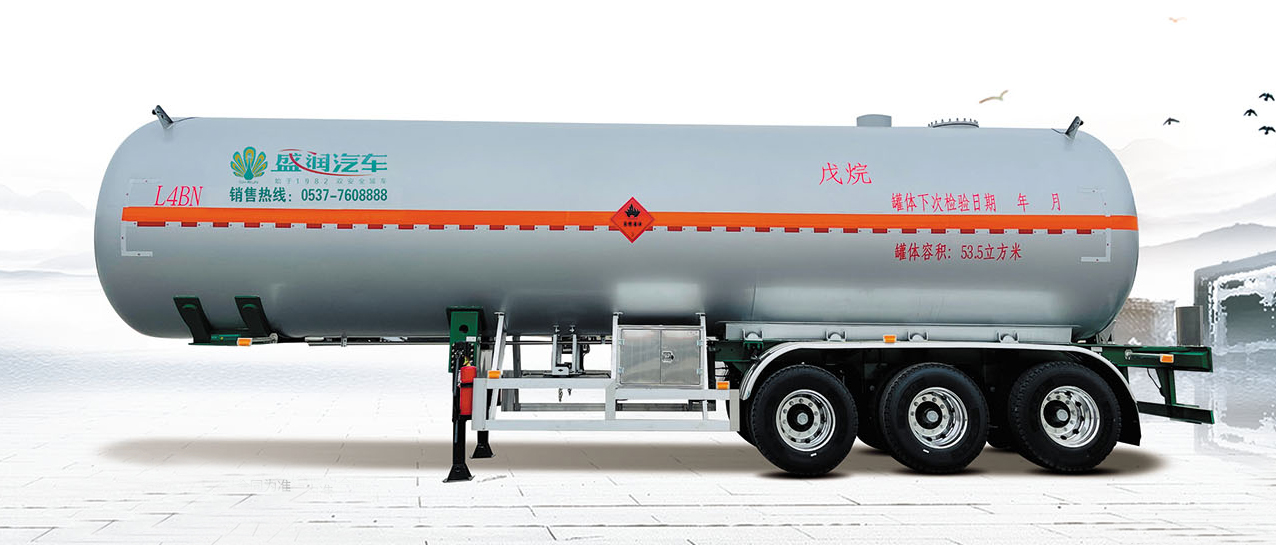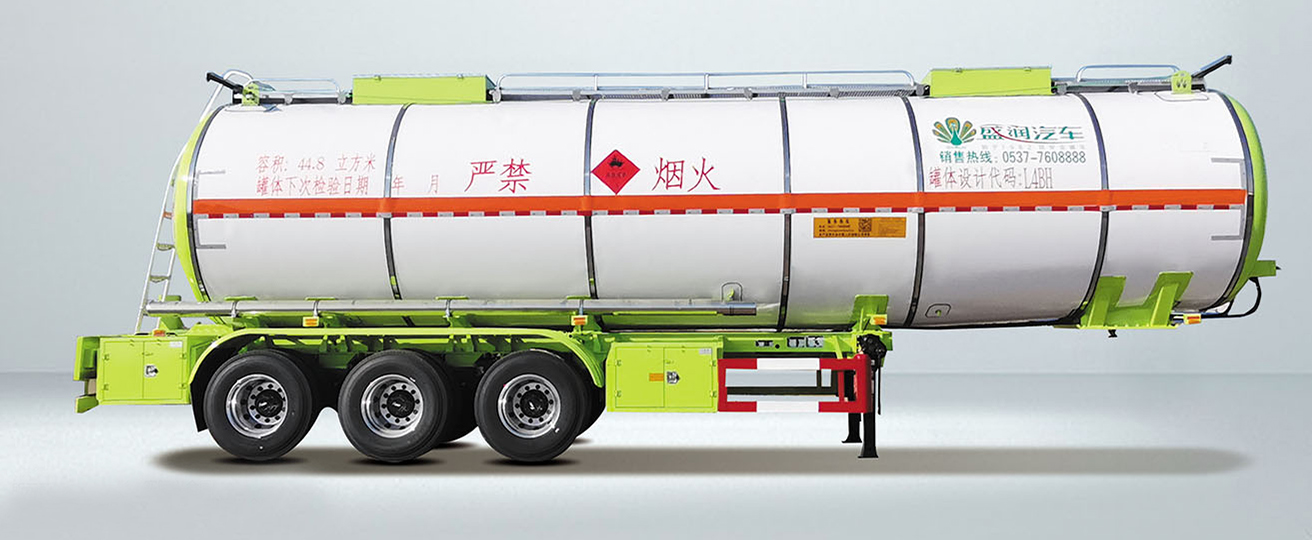Precautions for transportation of dangerous goods in winter
Precautions for dangerous goods transport vehicles With the advent of winter, severe weather such as ice, snow, rain, fog, and frost gradually appears. In winter, the snowfall road is slippery and icy, which increases the driving risk of dangerous goods transport vehicles and is prone to skids and sideslips. This issue We have sorted out the driving skills of hazardous chemical transport vehicles in winter and related self-rescue and escape knowledge for everyone to learn!
ask:
I am a driver of a truck transporting hazardous chemicals. I have experienced low temperature, rain and snow on the road. In heavy snow weather, I often start to slip and slip while driving. What driving skills do I have in rain and snow? Precautions for dangerous goods transport vehicles
1. Increase friction with snow chains
After the anti-skid chain is installed, the friction force between the tire and the ice and snow road surface is increased, and the driving is more stable. Pay attention to take out the anti-skid chains in time after passing the ice and snow road, otherwise the damage to the tires will be great.
2. don't try too hard
After the tire rotates at high speed, the adhesion to the ground will be reduced, and slippage will easily occur. The driver must remember to lift the clutch slowly, step on the accelerator lightly, and usually start in 2nd gear. At this time, you can choose 3rd gear to start in order to reduce the torque. If there is slippage at the start, fully close the accelerator immediately, and gently adjust the steering wheel to ensure that the vehicle drives in the correct direction. Liquid tank truck manufacturer
3. Using the inertial braking of the engine
Special attention should be paid to the use of the tractor of the liquid tanker manufacturer. The trailer is affected by the front of the vehicle, and it is very prone to head-folding accidents when the speed is relatively fast. On icy and snowy roads, it is necessary to drive slowly in low gear, and to make full use of the "drag" braking of the engine to slow down, so as to maintain the adhesion between the wheels and the road is much better than using the foot brake. If you want to drive at a low speed, consider driving in a lower gear, keep the engine at a slightly higher speed, and gradually lift the accelerator to obtain engine braking. Regardless of whether the truck is equipped with an anti-lock braking system or not, it is best to pre-step on the brakes a few times before braking, which can remind the vehicles behind to slow down to avoid rear-end collisions.

4. Precautions for going up and downhill
When going uphill in the snow, you must keep a doubled distance from the vehicle in front, and strive to complete the climb in one go. In case the wheels slip due to icing on the ground when climbing, you can sprinkle some sand or lay felt on the front and back of the wheels to increase the friction. If necessary, tools can also be used to break the hard ice on the ground into horizontal grooves to prevent the wheels from slipping. When going downhill, shift to the first gear smoothly, and use the low gear to reduce the speed of the vehicle.
5. don't change lanes frequently
When overtaking is necessary, keep a safe enough distance from the vehicle being overtaken, and don't rush back to the original road after overtaking. Keep a sufficient distance from the vehicle behind before returning to the original road.
6. avoid rushing direction
When driving in snowy weather, avoid sharp steering, rapid acceleration or sudden braking, and drive at a low speed as much as possible. Snowfall can lead to icy roads or muddy roads, which will reduce the grip of the tires. If the vehicle skids while driving, release the accelerator immediately and do not slam on the brakes. If a skid has occurred, release the brakes immediately so that the steering wheel can regain control of the car. When turning, slow down first, increase the turning radius appropriately and turn the steering wheel slowly. The operation of the steering wheel should be smooth and gentle.
7. choose the right tire
Professional snow tires are optional. If you encounter ice and snow on the way and cannot replace the snow tires in time, you can deflate the tires to increase the contact surface between the tires and the ground and improve the grip of the tires.

ask:
I am an ordinary car driver, if there is a dangerous goods tanker driving in front of me, what problems should I pay attention to? Precautions for dangerous goods transport vehicles
1. Pay attention to the way you follow the car
Pay attention to identifying hazardous chemical transport vehicles, try to avoid running in parallel with hazardous chemical transport vehicles when driving, keep a distance when overtaking or meeting vehicles, and do not deliberately change lanes or block traffic.
When the traffic flow is large or the road vehicles are slow-moving, it may be necessary to follow the hazardous chemical transport vehicle for a long time. Due to the large mass of the tank car body and the greater inertia of the vehicle after loading, special attention should be paid to the following distance. When the road is congested, the heavy vehicle will generally keep a distance of 1 to 2 parking spaces from the vehicle in front. This is a safe distance set aside by the driver of the heavy vehicle to ensure that the brakes will not collide with the vehicle in front. They are closely following the vehicle in front.
2. Pay attention to the type of goods
If you have to follow the hazardous chemical transport vehicle for a long time while driving, it is recommended that the driver and passengers pay attention to the type of hazardous chemical transport vehicle under the condition of ensuring safety. The names of hazardous chemicals are usually sprayed on the bottom or body of the tank at the rear of the vehicle. If the vehicle breaks down, targeted and correct self-rescue measures can be taken at the first time.
3. Be aware of your surroundings
If the dangerous chemical transport vehicle next to you has an accident and the road is blocked, the drivers and passengers of the surrounding vehicles should evacuate the scene as soon as possible. There are many types of hazardous chemicals with different hazards. How to safely evacuate is also closely related to the surrounding water body, weather, terrain, wind direction and other factors. Therefore, it is also necessary to pay attention to the surrounding environment on the premise of ensuring driving safety, and ensure that the correct escape direction and route are selected when evacuating.

Question: I am an ordinary driver. If I encounter a dangerous cargo tanker on the highway and have an accident or leak, how should I escape and save myself? Liquid tank truck manufacturer
1. Timely evacuation, call the police
When escaping, you should quickly withdraw to the outside of the highway guardrail to avoid secondary accidents with other normal vehicles. Do not go against the road, cross or walk on the highway. Watch out for curbs and ditches when climbing out of the guardrail. Pay attention to the traffic flow when evacuating the bridge-tunnel section, and run to the area with slopes or shoulders as soon as possible to exit the expressway.
After escaping to a safe area, you should immediately call the high-speed traffic police to call the police, and at the same time dial "119" to contact the fire department for rescue.
2. Pay attention to the correct escape direction
Gases and liquids can flow. When leaking, the escape route should be selected according to whether it is flammable, toxic, soluble in water, etc., and combined with environmental factors.
When there is wind, escape in the upwind direction. If the accident happened on the ramp, in addition to paying attention to the wind direction, you should also choose the vertical direction of escape. Methane, carbon monoxide, ethylene, acetylene, etc. are lighter than air. In a windless environment, try to choose the downhill direction to escape. Benzene, chlorine gas, phosgene, etc. are heavier than air, so try to escape uphill in a windless environment. If the leakage is liquid or liquefied gas, you should choose to escape to a high place.
3. Pay special attention to hazardous chemicals that react with water
Many hazardous chemicals will undergo chemical or physical reactions when exposed to water. Therefore, try to choose a high place for escape in rainy or snowy days or when the road surface is slippery. Try not to touch the nearby water, especially the road surface water or rain at the accident site. Special attention should be paid to when a large amount of concentrated sulfuric acid leaks, it will release a lot of heat when it meets water, causing the liquid to boil and splash and hurt people.
4. Beware of inhaling volatile gases
Nitric acid, sulfuric acid, and hydrochloric acid are well-known strong acids for dangerous goods tankers. These corrosive acids will volatilize corrosive vapors and spread along the lower places. When evacuating, pay attention to the escape direction and protect the respiratory tract. In addition, contact of nitric acid with some organic matter (such as fiber) may cause combustion, and contact with metal (such as highway guardrails are mostly made of metal) will produce flammable hydrogen gas. When evacuating, pay attention to the surrounding environment and pay attention to fire prevention.





